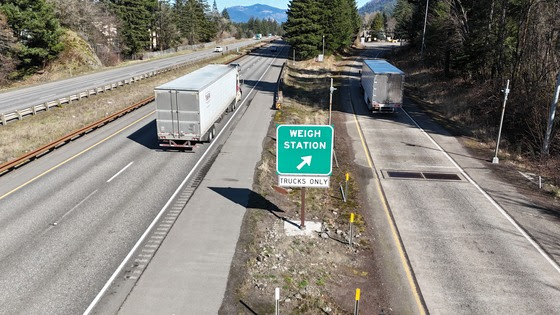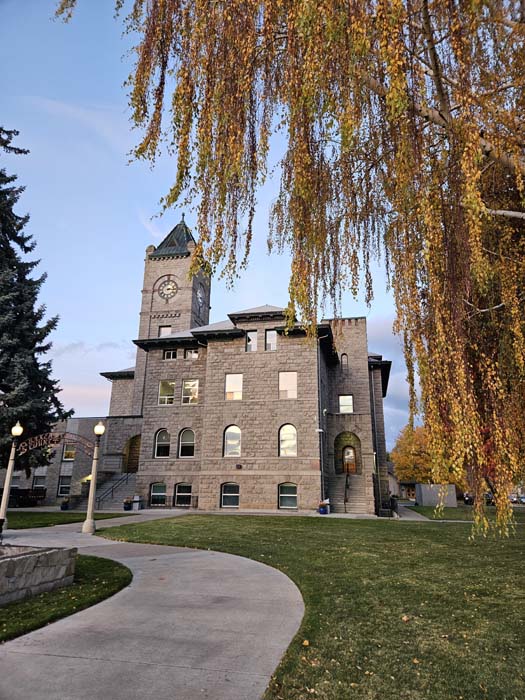‘Ice age stories’
Published 6:45 pm Friday, October 17, 2014

- Bruce Bjornstad
Kennewick Man, the Ancient One, or as Columbia River Indian tribes call him, Oiytpamanatitite, died more than 9,000 years ago. But if he lived thousands of years earlier, his remains may have washed away in a giant Ice Age flood.
The science of those floods and American Indian beliefs about the land and Kennewick Man converged in separate presentations Saturday at Heritage Station, Pendleton, home of the Umatilla County Historical Society, and 75 people packed a lecture hall to learn from experts about each. Historical society member Bonnie Sager called the event “a day for stories.” She also a read an account of the life of Marie Dorion, American Indian and the lone woman on the Astor Expedition in the early 1800s. She also kept her two children alive in winter in the Blue Mountains for 50 days following an American Indian attack.
Geologist Bruce Bjornstad since the 1980s has studied the Ice Age Floods, cataclysmic floods that time and again broke through an ice dam that formed Glacial Lake Missoula, a body of water the size of Lake Erie and Lake Ontario combined. The giant lake drained in as little as two days, he said, and the torrent swept across eastern Washington and the Columbia River Gorge, changing the morphology of the land.
The last flood was about 15,000 years ago, Bjornstad said, and if climate cycles continue as they have for about the last 1 million years — depending upon the effects of global warming — the next glacial flood could come in another 35,000 years.
Armand Minthorn, head of the cultural resources committee for the Confederated Tribes of the Umatilla Indian Reservation, told the story of Kennewick Man from the American Indian point of view. He also said the Umatilla tribe has an oral history that includes an account of those floods.
Rattlesnake Mountain in Benton County, Washington, rises to more than 3,500 feet. Bjornstad said the Ice Age Floods covered what is now the Tri-Cities in 900 feet of water and carried icebergs, which deposited glacial erratics — giant boulders from thousands of miles away — onto Rattlesnake Mountain. Minthorn said Indians call the mountain Laliik, and it is a sacred place because the Indian people rushed to the top of that mountain to survive an enormous flood.
“We have oral histories going back that far,” he said.
Minthorn focused on Oiytpamanatitite, the 9,000-year-old remains of a man that two people stumbled upon in 1986 in the shore of the Columbia River at Kennewick, Washington. Minthorn recounted how five Columbia River tribes sought to use the federal Native American Graves Protection and Repatriation Act to possess and re-bury the remains. They lost the court battle in 2005 when a federal judge ruled the tribes had not shown evidence the remains were related to American Indians. The Burke Museum at Washington State University, Seattle, keeps the remains under lock and key, Minthorn said, and at least twice a year tribal members visit the remains to hold religious ceremonies.
But that could change, Minthorn said. Paleobiologist Eske Willerslev of the University of Copenhagen, Denmark, is undertaking new DNA testing of Kennewick Man. Willerslev in February published his team’s evidence showing early people in North and South American are genetically related to the remains of a boy buried in Montana 12,600 year ago.
Minthorn said that may prove to be the case with Kennewick Man, and the results could be available late fall or early 2015. And in 2015, he stressed, the tribes also plan to get the remains and bury them.
“This is our intent and this is our effort in 2015,” he said.
And if you want to know more about the Ice Age Floods and where to see evidence of them yourself, visit www.brucebjornstad.com.
———
Contact Phil Wright at pwright@eastoregonian.com or 541-966-0833.





